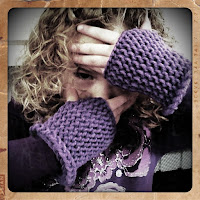
Knifty Knitter Knitting Looms
Connecting Knifty Knitter Panels with the Mattress Seam
The mattress seam is barely visible and is a perfect seam for attaching several Knifty Knitter panels into a blanket.- Place the pieces of knit to be connected on a flat surface. The side most often seen should be facing up. The panels should be laying side by side.
- Weave a needle through the center of the stitch on one knit and across to the center of the stitch on the attaching knit. In the center of each stitch, there is a small post, the yarn should be weaved around this post. Weave the yarn back and forth between the two panels. After you have done this approximately 5 times. Pull the yarn tighter to fully connect the panels.
- Work attaching the seams of the knifty knitter panels weaving, then tightening the weave, working down the seams.
- When the end of the seams are reached, tie a square knot and snip the yarn, weaving the excess yarn into the knit.
Connecting Knifty Knitter Knit with a Hidden Seam
The hidden seam will create a ridge and the bulk of the seam should be on the wrong side of the fabric, similar to a sleeve seam.- When removing each of the knits to be attached from the Knifty Knitter loom, weave a yarn of a different color through the loops to keep them from unraveling. This yarn is temporary and it is not important that it doesn't match. In fact, choosing a contrasting color makes it easier to see and remove the yarn later.
- Place the right sides of the knit together and using a crochet hook feed one loop through the loop opposite it on the other knit.
- In an alternating pattern feed the loops through each other until the end of the row is reached.





 When knitting a flat panel with the Knifty Knitter loom, you stop and reverse direction at each end of the loom. This is indicated by the red arrows in the photo. Each time you reach the red arrow, you stop and knit back across the loom from the direction in which you just came. The result is a flat panel with a single layer of knit.
When knitting a flat panel with the Knifty Knitter loom, you stop and reverse direction at each end of the loom. This is indicated by the red arrows in the photo. Each time you reach the red arrow, you stop and knit back across the loom from the direction in which you just came. The result is a flat panel with a single layer of knit. I placed a photo of circular knit here, to show you another possible method of knitting on the long looms. To knit a tube, or circular knit, you go continuously around the loom in the same direction, never reversing. You spiral until the knit reaches the desired length.
I placed a photo of circular knit here, to show you another possible method of knitting on the long looms. To knit a tube, or circular knit, you go continuously around the loom in the same direction, never reversing. You spiral until the knit reaches the desired length. Because the finished knit is determined by the method of knitting, not the shape of the loom, it is possible to knit a flat panel on a round loom. Knit around the loom until you reach the stop point. Then reverse direction and knit back across to the other stop point, instead of spiraling around in the same direction. Do this repeatedly stopping and reverse directions at the stop points. This creates a flat panel knit on the round loom.
Because the finished knit is determined by the method of knitting, not the shape of the loom, it is possible to knit a flat panel on a round loom. Knit around the loom until you reach the stop point. Then reverse direction and knit back across to the other stop point, instead of spiraling around in the same direction. Do this repeatedly stopping and reverse directions at the stop points. This creates a flat panel knit on the round loom. There is one more method of knitting a flat panel on the Knifty Knitter looms. It can be done only on the long looms. It creates a flat panel of knit with a double thickness, such as a heavy blanket, or a scarf. It is created by wrapping the loom up and down using both top and bottom, then knitting off in a back and forth motion across the loom. The
There is one more method of knitting a flat panel on the Knifty Knitter looms. It can be done only on the long looms. It creates a flat panel of knit with a double thickness, such as a heavy blanket, or a scarf. It is created by wrapping the loom up and down using both top and bottom, then knitting off in a back and forth motion across the loom. The 

